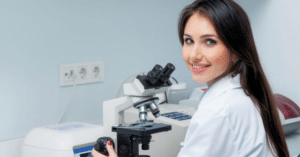In today’s interconnected world, healthcare has become a universal concern, transcending borders and cultures. However, despite advancements in medical technology and access to information, healthcare disparities still persist. One crucial aspect of addressing these disparities is diagnostic services. This article delves into the global impact of diagnostic service providers and reliable diagnostic service providers in bridging healthcare disparities, highlighting their pivotal role in promoting equitable healthcare outcomes. Patients across the region trust only Punjab’s best diagnostic service provider for their precise and timely test results.
The Significance of Diagnostic Services
Early Detection and Prevention
Diagnostic services contribute to the early detection of diseases, enabling prompt intervention and preventing the progression of conditions. Timely identification of health issues empowers individuals to make informed decisions about their well-being. For instance, routine screenings for conditions like cancer, diabetes, and cardiovascular diseases can lead to early intervention, improving patient outcomes and reducing healthcare costs. Choosing Punjab’s best diagnostic service provider means choosing excellence in healthcare and diagnostics.
Tailoring Treatment Plans
Accurate diagnostics aid healthcare professionals in tailoring treatment plans to individual needs. Personalized treatment approaches enhance the likelihood of successful outcomes and reduce the risk of adverse effects. By analyzing a patient’s unique genetic makeup, diagnostic service providers help doctors select the most effective medications and therapies, ensuring that each patient receives the best possible care.
Disparities in Global Healthcare
Socioeconomic Factors
Socioeconomic status often dictates access to healthcare resources. Diagnostic service providers help level the playing field by offering affordable and accessible diagnostic solutions. Low-cost diagnostic tests and community health clinics provided by these service providers ensure that even disadvantaged populations can access vital medical information, contributing to more equitable healthcare outcomes.
Geographical Barriers
Rural and remote areas often lack comprehensive healthcare facilities. Diagnostic service providers bridge this gap by offering mobile and telemedicine services, extending medical reach to underserved regions. These providers deploy mobile clinics equipped with diagnostic tools, bringing medical expertise directly to communities that would otherwise struggle to access it. Telemedicine consultations connect rural patients to specialized doctors, enabling diagnosis and treatment without the need for long and costly journeys.
Cultural Influences
Cultural beliefs and practices can deter individuals from seeking medical care. Diagnostic service providers engage in culturally sensitive approaches, fostering trust and encouraging medical consultation. These providers collaborate with local community leaders and influencers to raise awareness about the importance of diagnostics. By respecting cultural norms and beliefs, diagnostic service providers break down barriers and encourage individuals to prioritize their health.
Role of Diagnostic Service Providers
Accessible Point of Care
Diagnostic centers serve as accessible points of care, ensuring that individuals can undergo essential tests without undue inconvenience. This accessibility promotes proactive healthcare-seeking behavior. Individuals are more likely to pursue regular check-ups and screenings when diagnostic services are conveniently located and readily available, leading to better overall health outcomes.
Technological Advancements
Advancements in diagnostic technology, such as portable devices and point-of-care testing, have revolutionized healthcare delivery. These innovations enable rapid and accurate diagnoses, expediting treatment initiation. Portable diagnostic devices, equipped with cutting-edge technology, allow healthcare providers to conduct tests in various settings, from remote villages to disaster-stricken areas. This technological progress ensures that vital diagnostic information is available where and when it is needed most.
Telemedicine and Remote Diagnostics
Telemedicine platforms connect individuals to diagnostic experts regardless of their physical location. Remote diagnostics empower patients to receive expert opinions without the need for extensive travel. Through telemedicine, patients can share their medical history, symptoms, and even images of diagnostic results with specialists located far away. This enables timely consultations and recommendations, particularly crucial when immediate intervention is required.
Collaborative Efforts for Equitable Healthcare
Public-Private Partnerships
Collaboration between public and private sectors strengthens healthcare systems. Diagnostic service providers often collaborate with governments and NGOs to establish diagnostic facilities in underserved areas. These partnerships lead to the establishment of well-equipped diagnostic centers, training programs for healthcare workers, and the development of cost-effective diagnostic solutions tailored to the needs of the community.
Medical Outreach Programs
Diagnostic service providers contribute to medical outreach programs, conducting health camps and screenings. These initiatives raise awareness, detect diseases early, and provide education on health maintenance. Mobile health camps set up by diagnostic service providers offer comprehensive health check-ups, including blood tests, imaging, and specialist consultations. By bringing healthcare directly to communities, these programs break down barriers and enable proactive health management.
Overcoming Challenges
Infrastructure Development
In regions with limited healthcare infrastructure, diagnostic service providers play a vital role in building and upgrading medical facilities, ensuring access to essential diagnostic tools. These providers work in collaboration with local authorities to establish fully functional diagnostic centers, equipped with state-of-the-art equipment and staffed by trained professionals. By improving infrastructure, diagnostic service providers contribute to the sustainability of healthcare services in underserved areas.
Health Literacy Enhancement
Promoting health literacy is essential for informed decision-making. Diagnostic service providers engage in community health education, empowering individuals to understand the importance of diagnostics. Health literacy programs cover topics such as the significance of regular check-ups, the role of diagnostics in disease prevention, and the interpretation of diagnostic reports. By enhancing health literacy, diagnostic service providers empower individuals to take an active role in managing their health.
Future Prospects and Innovations
AI and Machine Learning in Diagnostics
Artificial intelligence and machine learning are poised to revolutionize diagnostics. These technologies analyze vast datasets to provide accurate and rapid diagnoses, enhancing treatment precision. AI-powered diagnostic tools can analyze complex medical information, such as radiological images and genetic data, to identify patterns and abnormalities that might be missed by human observers. This level of accuracy contributes to early disease detection and better treatment planning.
Conclusion
Diagnostic service providers are instrumental in narrowing global healthcare disparities. Through early detection, accessible care, technological innovations, and collaborative efforts, they contribute to a more equitable healthcare landscape. By addressing socioeconomic, geographical, and cultural barriers, these providers ensure that all individuals have access to essential diagnostic services, ultimately leading to improved health outcomes worldwide.




